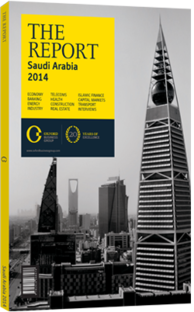Riyad Bank: Banking
COMPANY: Established in 1957 and headquartered in Riyadh, Riyad Bank operates through a network of 252 national branches and services its retail, corporate and institutional customers with a range of conventional and Islamic banking products. In addition, the bank provides insurance services through its wholly-owned subsidiary, Riyad Company for Insurance Agency, and through its UAE-based associate, Royal and Sun Alliance Insurance (Middle East). In December 2013, Riyad Bank was the first bank to receive a licence from the country’s central bank, the Saudi Arabian Monetary Agency, to provide real estate financing and financial leasing products. Internationally, the bank operates one branch in London, one agency in Houston, Texas and one representative office in Singapore. Key shareholders include the Public Investment Fund (21.7%), the General Organisation for Social Insurance (21.6%), Al Nahla Group (9.1%), the Public Pension Agency (9.1%) and Masek Holding Company (8%). The bank had a market capitalisation of $14bn as of May 2014, and an average daily turnover of $10m over the past three months.
Riyad Bank’s balance sheet growth has lagged behind its peers in the last four years and its asset market share has declined from 13% to 11% during this period. However, Riyad Bank enhanced its funding base with a SR4bn ($1bn) Islamic sukuk issue in November 2013, which likely supported the impressive recent recovery in credit volume growth (+4% quarter-onquarter, +13% year-on-year) in the first quarter of 2014. We expect that loans will grow at an average of 13% per annum in 2014 and 2015.
As of 2013, 88% of the bank’s assets were located in Saudi Arabia, broadly in line with previous years. North American assets (primarily investments) account for approximately 6% of the balance sheet, with the remaining assets split between other Middle Eastern countries and Europe. Riyad Bank’s retail banking division contributed 34% to the bank’s revenues in 2013, down from 36% in 2007, while corporate banking revenues constituted 45%, up from 30% in 2007. The remainder came from investment banking or brokerage services (5%) and treasury operations (15%).
DEVELOPMENT STRATEGY: Net special commission income accounted for 66% of Riyad Bank’s 2013 revenues. The bank’s management has focused on maintaining net special income margins and it has slowly replaced its high cost time deposits with non-interest bearing demand deposits (44% of total deposits in 2013 versus 28% in 2008). Indeed, in contrast to many of its peers, Riyad Bank's margins have been broadly stable at 2.35-2.4% of average assets since 2010. Fee income represented 26% of the bank’s revenues. Riyad Bank has a strong corporate banking franchise (with a loan market share of 13% as of December 2013), hence it could be a key beneficiary of any increased demand for banking products from this segment, particularly in relation to fee income. Higher public spending could help support corporate banking volume growth.
Since 2008, Riyad Bank’s revenues have grown by 6% per annum on average. Net special commission income has advanced by 4% per year, broadly in line with the 5% annual growth on the balance sheet. Fee income growth has averaged 9% per annum, although with some volatility. Operating cost growth has averaged 4%, in line with revenues, while the cost-to-income ratio has hovered between 35-40%, from 36.4% in 2013. Over 2008-13, pre-provision profit grew 8% per year. With credit risk costs averaging an annual 65 basis points of net loans (below the 86 point sector average), Riyad Bank has delivered 8% annual net income growth. Return on equity has remained reasonably stable over this period, within the 10-12% range. Capitalisation levels have remained robust; at the end of 2013, the bank’s Tier 1 ratio stood at 16.6%, after averaging 15.7% since 2008. The total capital ratio was 17.1%, while the equity/assets ratio was 16.5%. Riyad Bank enjoys superior asset quality metrics compared to its peers; with provisions coverage at 155%, non-performing loans to net loans stood at 1% in March 2014 compared to the sector average of 1.3% in December 2013.
You have reached the limit of premium articles you can view for free.
Choose from the options below to purchase print or digital editions of our Reports. You can also purchase a website subscription giving you unlimited access to all of our Reports online for 12 months.
If you have already purchased this Report or have a website subscription, please login to continue.

